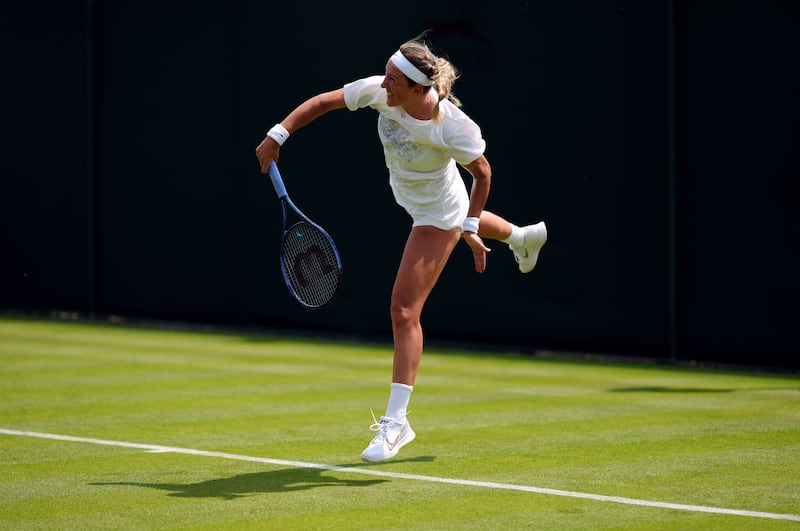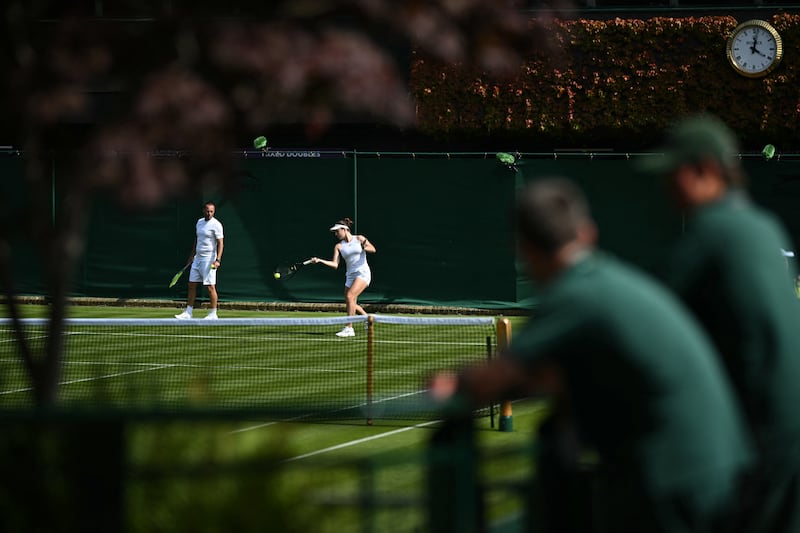As she took her first timid steps as a professional tennis player 21 years ago, one of the most important early decisions Victoria Azarenka made was to invest in her own fitness coach. Having enjoyed an outstanding junior career, Azarenka already knew she wanted to be a top tennis player for as long as she could and that beginning to build a formidable team around her was a priority in order to achieve it. Back then, though, not everyone did.
“I think when I started, when I was a young player, I was one of the few players who travelled with a fitness coach,” says Azarenka, smiling. “And now it’s fitness coach, physio, psychologist, videographer, manicurist and everything … It’s sometimes exaggerated but tennis has become more professional.”
Over the years, professional tennis has changed in many ways and one of the most notable transformations is the growth of the player entourages. While top players used to travel with only a coach, if anyone, it is now standard for them to have personal fitness trainers and physios as they try to eke out as much of their talent as possible.
As with many trends in recent years, Roger Federer, Rafael Nadal, Novak Djokovic and Serena Williams set the standard with their large entourages and their influence is seen in players such as Carlos Alcaraz and Jannik Sinner. “It’s good to find the team that works for you,” says Taylor Fritz. “Pretty early on, I invested in a full-time physio. That’s huge because taking care of the body is the most important thing. As soon as you’re top 100 and I feel like you have the money to afford it, it’s worth it for sure. It pays itself back.”
Emma Raducanu’s stalker blocked by Wimbledon after name found in ballot
How much will it cost you to go to Wimbledon?
The Warrior: Rafael Nadal and His Kingdom of Clay a timely reminder of star now lost from tennis
Alcaraz’s ridiculous victory over Sinner sets tone for next decade of rivalry at top of tennis
There is still a massive contrast between the wealthy leading lights who can afford to travel with small armies of helpers and the rest of the tour but the growing prize money pots at the biggest tournaments have allowed more players to invest in other team members. Andy Murray has said: “I think it’s really important to do that when you can. Obviously there is a lot more prize money on the tour now, and certainly more players are able to afford having more than just maybe a coach with them.”
[ The Racket by Conor Niland: Lonely tennis locker room conveyed with deft touchOpens in new window ]
Madison Keys agrees. “It’s definitely changed a lot since I first started,” she says. “Obviously, I think more prize money helps, but I think it’s getting to the point where you kind of need everyone on the road, but it’s definitely more people, more kids. There’s just a lot of people around all the time. We’re truly a travelling circus.”
These entourages are more than just performance staff. Players are surrounded by family and friends, their player boxes also filled with agents and sponsors. For Tommy Paul, who won Queen’s last week, the increased calendar, with the two week 1000 tournaments, means fewer opportunities to return home. “If you want to have friends at all, you have to bring them on the road,” says Paul. “If you want to be able to play the whole year, you have to bring a physio. You obviously need a coach. Teams are getting bigger and bigger because we don’t have any time at home.”
Despite the general trend of growing teams, every player has a different perspective on the amount of people they prefer travelling with. Sorana Cirstea, who likes to keep her circle tight, says: “I like to be, for example, by myself quite a bit. I’m social but for a certain period of time. Sometimes when I have too many people, I think it’s too many opinions. I’ll try to alternate a little bit. Sometimes also I don’t like to have three or four people around me because I feel I have to take care of them a little bit. It’s a personal choice.”

Azarenka, meanwhile, has now spent a significant part of her career as a mother, which has required coordinating the days she travels with her son, Leo. “I have a kid, so that’s a little bit different,” she says. “I can’t be like: ‘OK, you can’t come. Too many credentials now.’ I think it depends. It probably depends on where you are mentally also, sometimes when you’re trying to regroup you need maybe a little bit more space. When you need more support you need a little bit more people. So I think it depends on your personality and how you are. I think you see ATP players travelling with more friends, people to hang out with. I think the girls like to be more professional, more strict.”
It does not require much time spent in the player areas at tournaments around the world to understand the implications of these growing entourages. Not every tournament is built to handle the number of people that arrive each year. Fritz says: “At a lot of the slams, in the early rounds you have men, women and 128 people on both sides. Getting a treatment table at the French Open was pretty much impossible this year in the first couple of days.”
Jamie Baker, tournament director at Wimbledon and a former player, says there is no question that player facilities are much busier today than they were in previous decades. “After the second round of the singles, the occupancy does start to die off,” he says, “but last year, I remember it like it was yesterday, we had so much rain in the first week at our peak time. We’re at the start of our expansion at the moment so, with our current footprint, our player facilities were absolutely jammed. People sitting on the floor, that type of stuff. Because at our peak time, we’re not used to having everybody inside at the same time.”
With so many accredited people on site, the tournaments also have numerous interesting amenities for the extras, including beauty salons and even a tattoo parlour at the French Open. Baker stresses the importance of quiet areas, where players have more time to relax. At Wimbledon, most players are limited to three accreditations for their team members but seeded players and former champions receive additional ones. There are also player-only areas where tournaments limit where certain team members or guests can enter.

There has been a rush for the biggest events to expand. The Australian Open’s grounds at Melbourne Park have been transformed over the past decade and the French Open has also expanded its grounds in an attempt to account for the bigger entourages and greater number of fans. The All England Club is in the process of its own expansion plans, with an attempt to unlock further space in the player areas and to fit the world of tennis comfortably in its halls.
While the sport has transformed in some ways, Azarenka still believes that tennis has a long way to go. “I think, still, compared to other sports, the science and the data is still quite behind,” she says. “Compared to golf, compared to football, compared to everything. I think in a way we’re pretty conservative and pretty young. Teams are getting a lot bigger, people are using more equipment, people are using more data. But in comparison, right now it’s pretty low.”
- Guardian
- Sign up for push alerts and have the best news, analysis and comment delivered directly to your phone
- Join The Irish Times on WhatsApp and stay up to date
- Listen to our Inside Politics podcast for the best political chat and analysis















